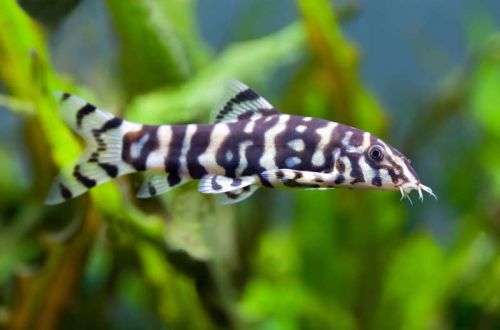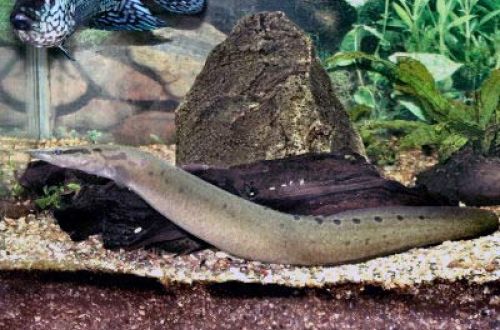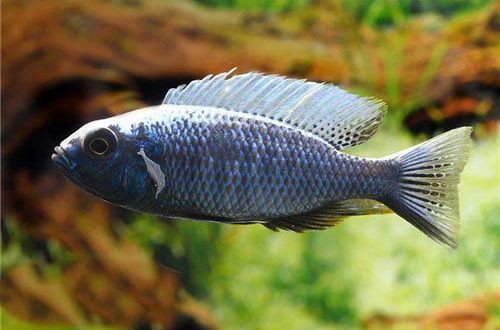
Botsiya marble
Botia marble or Botsia lohakata, the scientific name Botia lohachata, belongs to the family Botiidae (Botsievye). The fish is native to Asia, found in river systems flowing through Pakistan, India, Nepal and Bangladesh. It inhabits the main channels of rivers and streams with stony substrates and moderate or fast currents.

There are certain difficulties with identification. Some researchers single out Botia marble as an independent species, while others consider it one of the natural geographical forms of Botia Almora (Botia almorhae).
Description
Regardless of the species, this fish has a number of unique features. Adults reach a length of about 15 cm. The color is gray-green with a large dark pattern resembling marble. Young fish are golden or silver with a metallic sheen.
Behavior and Compatibility
Peaceful moving fish. High activity can be a problem for slow or small fish, so it is not recommended to house with species such as Guppies, Rasboras, etc. Fish with large fins, such as Betta, young Goldens, etc., are also at risk.
Good compatibility is achieved with species of comparable size living in the water column or near the surface.
Boats need the company of relatives, so it is recommended to purchase a group of at least 5-6 individuals. The optimal number is more than 10 fish. Alone, they will become shy or vice versa, aggressive. In a pair or in threes, a situation is possible when the dominant individual begins to oppress his relatives.
Brief information:
- The volume of the aquarium – from 200 liters.
- Temperature – 19-27°C
- Value pH — 6.0–8.0
- Water hardness – soft to medium hard (2-15 dGH)
- Substrate type – sandy
- Lighting – subdued
- Brackish water – no
- Water movement – moderate or weak
- The size of the fish is about 15 cm.
- Nutrition – any drowning
- Temperament – conditionally peaceful
- Content in a group of at least 5–6 individuals
Maintenance and care, arrangement of the aquarium
Recommended aquarium sizes for a group of 5-6 fish start at 200 liters. It should be borne in mind that the area of the bottom of the tank is more important than its height. The design uses soft soil, for example, sandy or small pebbles, in which Botsia lohakata will dig in search of food. It is advisable to provide shelters from snags or other decorative items.
Due to the nature of the diet, aquatic plants can be uprooted or severely damaged. For this reason, it is worth using either artificial or hard-leaved species, ferns and mosses growing on snags. Plants rooted in the ground are unlikely to take root.
Although Botsia comes from fast, turbulent rivers, there is no urgent need to create a current in the aquarium.
Successful long-term maintenance largely depends on the regularity and completeness of maintenance procedures. At a minimum, it is necessary to replace part of the water with fresh water weekly, combined with cleaning the soil from accumulated organic waste.
Food
Omnivorous species. Will accept popular sinking foods that should include herbal supplements. They tend to eat the soft parts of aquatic plants. A good addition would be live or frozen foods such as bloodworms, brine shrimp, etc.





